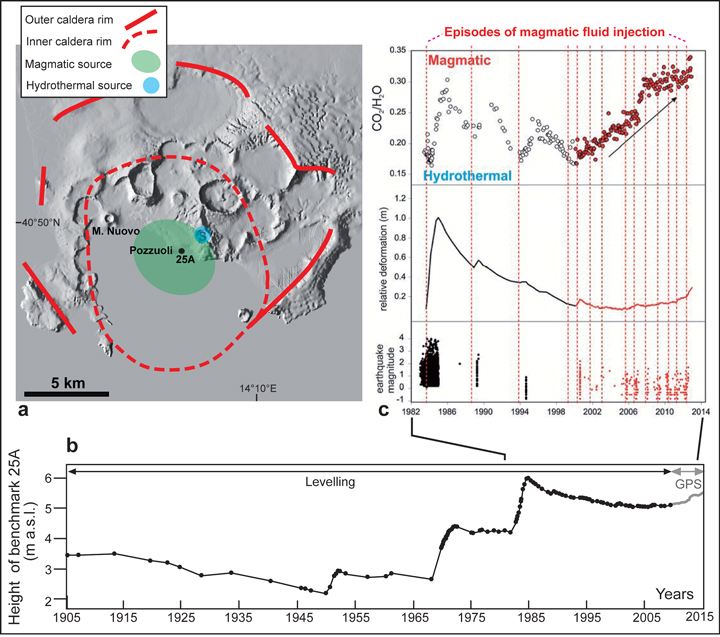The Eruptive Precursors project in Campi Flegrei, Italy, seeks to understand conditions leading to caldera eruptions.
Calderas are the most hazardous type of volcano. These depressions in the Earth’s surface often form when a magma chamber empties suddenly after an explosive eruption. The hazard arises because of a caldera’s large size, the long-lived magma systems that feed large explosive eruptions, and an overlying hydrothermal system that can either mask or amplify magmatic processes and make it difficult to predict these eruptions.
Periods of unrest, when the volcano undergoes abnormal changes in shape, structure, and chemistry, demonstrate calderas’ complexity. Unrest may culminate in an eruption, or it may merely mark a stage in a more complex dynamic evolution of the volcano. A conceptual model of the unrest may sharpen scientists’ understanding of the dynamics and lead to more reliable forecasts of impending eruptions.
What can we learn about calderas by studying unrest? What should we expect from caldera unrest? What are the associated hazards? These were the central questions of the Eruptive Precursors project. After 2 years, this project has provided constraints on unrest, in the form of deviations from geophysical and geochemical baselines, at the Campi Flegrei caldera in southern Italy.
